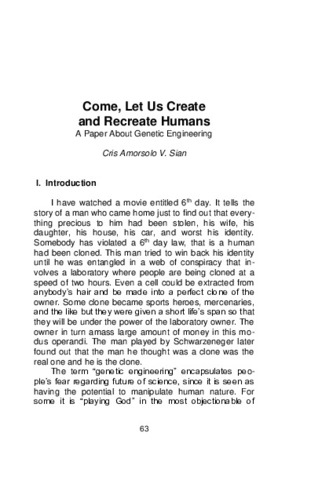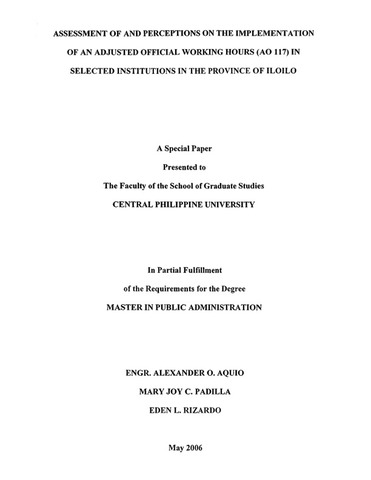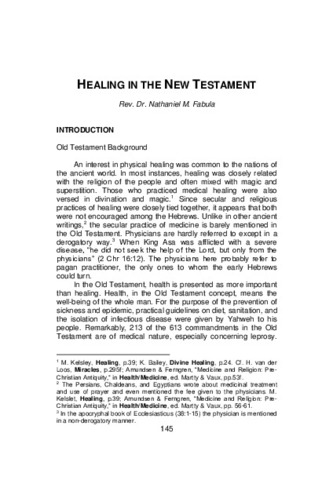Gender and psychosocial differentials in pain response among post operative open reduction internal fixation patients
| dc.contributor.adviser | Parreñas, Ma. Luisa S. | |
| dc.contributor.author | Murillo, Ma. Portia G. | |
| dc.date.accessioned | 2021-02-20T07:22:09Z | |
| dc.date.available | 2021-02-20T07:22:09Z | |
| dc.date.issued | 2001 | |
| dc.identifier.citation | Murillo, M. P. G. (2001). Gender and psychosocial differentials in pain response among post operative open reduction internal fixation patients (Unpublished Master's thesis). Central Philippine University, Jaro, Iloilo City. | en_US |
| dc.identifier.uri | https://hdl.handle.net/20.500.12852/480 | |
| dc.description | Abstract only | en_US |
| dc.description.abstract | This study was conducted to determine the gender and psychosocial differentials in the response to pain of post operative Open Reduction Internal Fixation patients. Specifically, this study determined whether or not there is a significant difference between the responses of the male and female post operative Open Reduction Internal Fixation patients in terms of their level of pain threshold, extent of physiological manifestations, and level of pain tolerance. It also aimed to determine whether level of awareness about the surgical procedure, previous experience with severe pain, and presence of support system before and after surgery affect pain responses, (level of pain threshold, extent of physiological manifestations, and level of pain tolerance). Data were generated through personal interview with 52 respondents using a structured interview schedule. The findings of the study showed that the majority of the respondents were male, married (28 out of 52) and were 20 - 30 years of age (28 out of 52). There was a high percentage from both gender groups had moderate pain threshold post operatively (54.1 percent for male, and 53.3 percent for the female).The percentage of the gender groups does not significantly differ as to their level of pain threshold. Male and female respondents of this study does not significantly differ with their extent of physiological manifestations of post operative pain as well as with their level of pain tolerance in male and female post operative patients. A high percentage of patients who had high level of pain threshold were those who previously experienced very severe pain, while the majority of the respondents who had low pain threshold were those who previously experienced moderately severe pain. Patients who manifested post operative pain to a great extent were usually those who previously experienced severe type of pain only, while the most number of patients who manifested post operative pain to a little extent were those who have previous experience with moderate pain. There was a higher level of pain tolerance among patients who had a previous experience with very severe type of pain and relatively lower percentage of them who had low tolerance to pain post operatively. A significant association was seen between level of awareness of surgical procedure and level of pain threshold, extent of physiological manifestations and level of tolerance to pain after surgery. Likewise, the presence of a support system before and after surgery greatly influenced pain responses (level of pain threshold, extent of physiological manifestations, and level of pain tolerance) among post operative Open Reduction Internal Fixation patients. Conclusions Based on the findings of the study, it can be concluded that male and female post operative Open Reduction Internal Fixation patients do not significantly differ as to their extent of physiological manifestations, level of pain threshold and level of tolerance to pain post operatively. Previous experience with severe pain, level of awareness about the surgical procedure to be performed and presence of support system before and after surgery are significantly associated with pain responses in terms of level of pain threshold, extent of physiological manifestations, and level of pain tolerance. Recommendations It is recommended that another study will be conducted with different cases using the same group of variables to find out and compare the difference in results. It would also be very useful to conduct the same study in government hospitals to establish consistency of the results. Other studies related to this case should be welcomed. This is for the information of the future researchers who are willing to continue with this study. | en_US |
| dc.format.extent | 62 leaves | en_US |
| dc.language.iso | en | en_US |
| dc.subject.ddc | GSL Theses 610.73072 M961 | en_US |
| dc.subject.lcsh | Postoperative pain | en_US |
| dc.subject.lcsh | Postoperative pain--Sex differences | en_US |
| dc.subject.lcsh | Sex differences | en_US |
| dc.subject.lcsh | Bones--Surgery | en_US |
| dc.subject.lcsh | Pain | en_US |
| dc.subject.lcsh | Pain--Physiological aspects | en_US |
| dc.subject.lcsh | Postoperative pain--Physiological aspects | en_US |
| dc.subject.lcsh | Pain--Psychological aspects | en_US |
| dc.subject.lcsh | Pain--Social aspects | en_US |
| dc.subject.lcsh | Postoperative pain--Psychological aspects | en_US |
| dc.subject.lcsh | Postoperative pain--Social aspects | en_US |
| dc.subject.lcsh | Pain--Sex differences | en_US |
| dc.subject.mesh | Pain, Postoperative | en_US |
| dc.subject.mesh | Pain | en_US |
| dc.title | Gender and psychosocial differentials in pain response among post operative open reduction internal fixation patients | en_US |
| dc.type | Thesis | en_US |
| dc.description.bibliographicalreferences | Includes bibliographic references | en_US |
| dc.contributor.chair | David, Fely P. | |
| dc.contributor.committeemember | Alibogha, Salex E. | |
| dc.contributor.committeemember | Chin, Fely P. | |
| dc.contributor.committeemember | Monteblanco, Sofia P. | |
| dc.contributor.committeemember | Somo, Lily Lynn V. | |
| dc.contributor.department | School of Graduate Studies | en_US |
| dc.description.degree | Master of Arts in Nursing | en_US |





